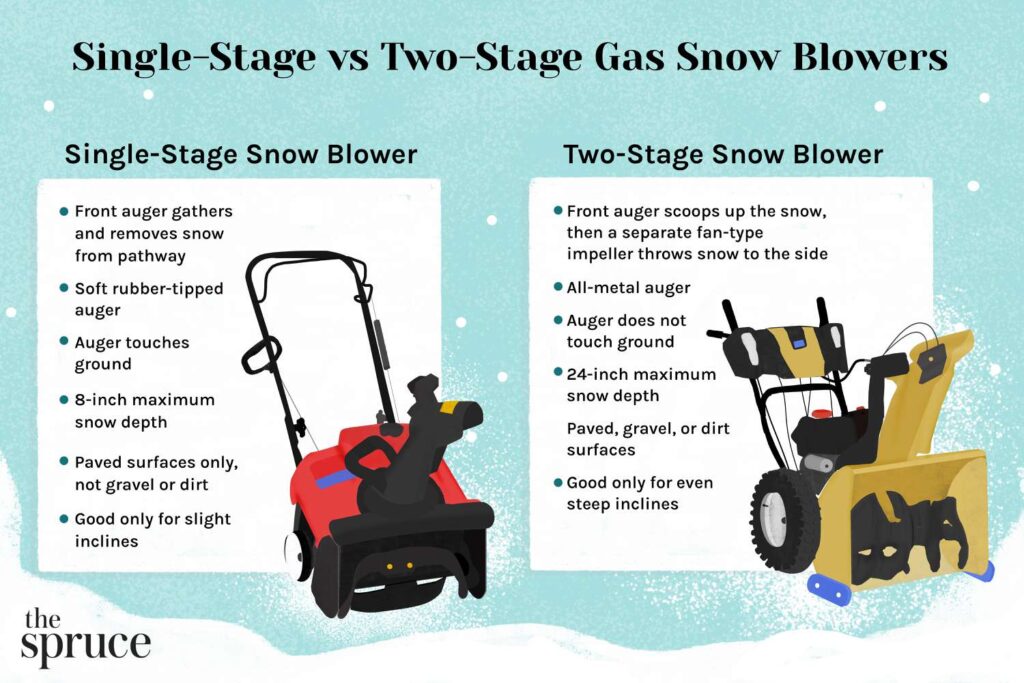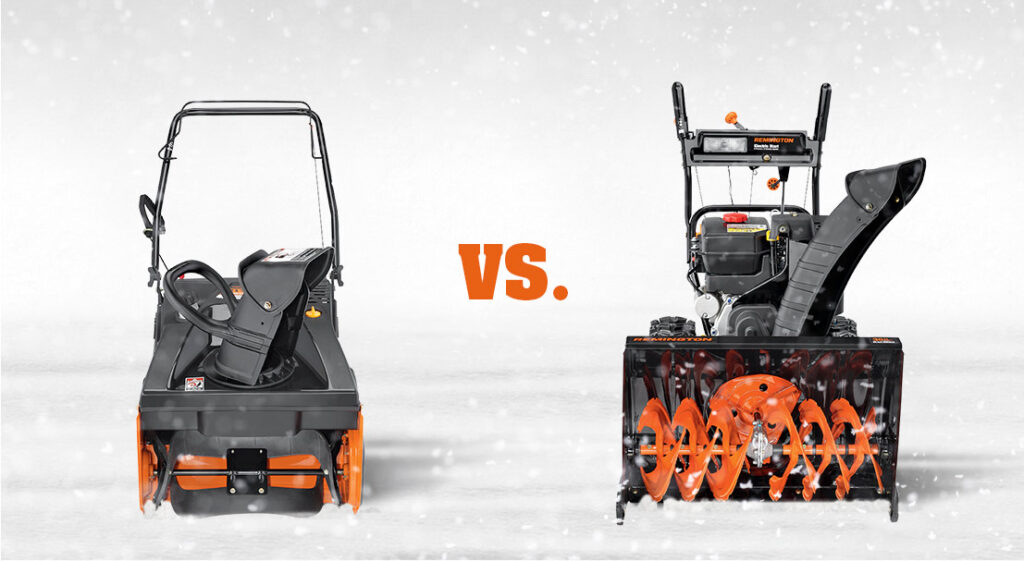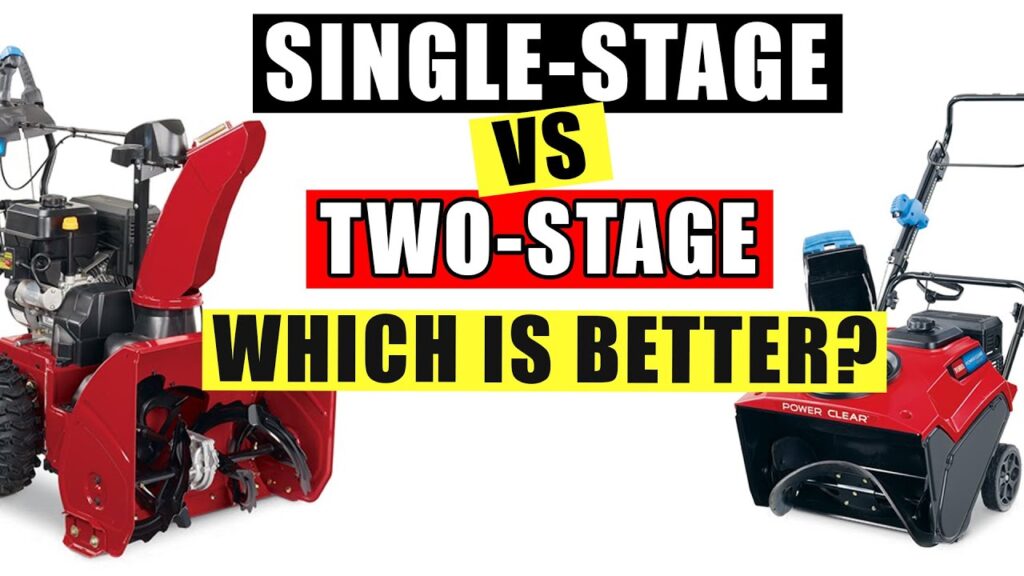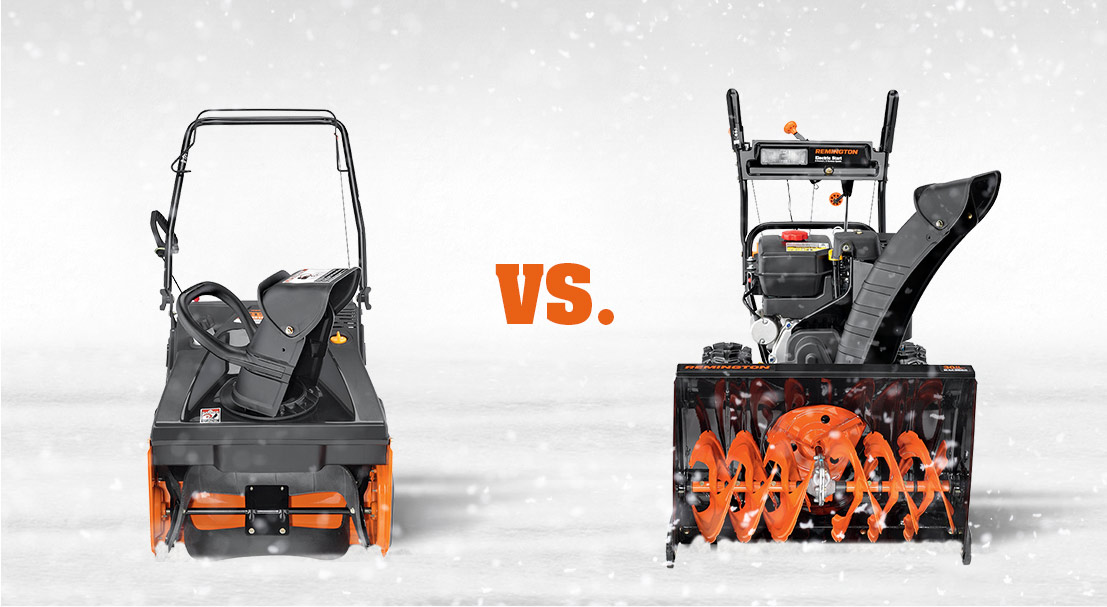Greetings! Today, we are here to explore the world of snow blowers, more specifically, the intriguing concept of a 1 stage snow blower. Curious to find out what it is? Well, buckle up because we are about to shed some light on this handy winter device that can make clearing snow a breeze. A 1 stage snow blower is a machine designed to efficiently remove snow from driveways, sidewalks, and other surfaces. It is a popular choice for both residential and commercial use due to its compact size, ease of use, and affordability. In this article, we will explore the design, functionality, and operating mechanism of a 1 stage snow blower, as well as its clearing width and throwing distance. We will also discuss ideal snowfall depth, pros and cons, considerations for choosing a 1 stage snow blower, and how to use and maintain it properly.
Definition of a 1 Stage Snow Blower
Design and Functionality
A 1 stage snow blower typically consists of a single rotating paddle or auger that gathers and propels snow through a discharge chute. These machines are usually lightweight and maneuverable, making them easy to handle and transport. Their compact design allows them to navigate narrow spaces and clear snow from hard-to-reach areas.
Operating Mechanism
The operating mechanism of a 1 stage snow blower is relatively simple. The rotating auger not only collects the snow but also propels it forward, throwing it out of the chute. Some models feature adjustable discharge chutes that allow you to control the direction in which the snow is thrown. The auger usually makes direct contact with the ground, helping to clear snow right down to the surface.
Clearing Width
The clearing width of a 1 stage snow blower refers to the width of the path it can clear in a single pass. Typically, these machines have clearing widths ranging from 18 to 22 inches, although some models may offer even wider options. It’s important to consider the size of the area you need to clear when selecting a snow blower with an appropriate clearing width.
Throwing Distance
The throwing distance of a 1 stage snow blower refers to how far it can throw the snow it collects. Generally, these machines have a throwing distance of around 10 to 30 feet. However, it’s worth noting that wet and heavy snow may not be thrown as far as light and dry snow. Additionally, some models allow you to adjust the throwing distance to suit your specific needs.
Ideal Snowfall Depth
While a 1 stage snow blower is capable of handling various snowfall depths, it is most efficient when clearing up to 8 inches of snow. Beyond that, the machine may struggle to remove the snow effectively, and multiple passes may be required. If you live in an area with frequent heavy snowfalls, you may want to consider a more powerful snow blower, such as a 2 stage model.
Pros and Cons
There are several advantages to using a 1 stage snow blower. They are typically lightweight, easy to maneuver, and less expensive than other types of snow blowers. Additionally, their compact design allows for easy storage in tight spaces. However, it’s important to consider some limitations. These machines may struggle with overly wet or heavy snow and may not be suitable for large areas or steep slopes. It’s crucial to carefully assess your specific needs and the conditions you expect to encounter before investing in a 1 stage snow blower.

This image is property of www.thespruce.com.
Choosing a 1 Stage Snow Blower
Considerations for Residential Use
When choosing a 1 stage snow blower for residential use, there are a few factors to consider. Firstly, evaluate the size of the area you need to clear. Smaller driveways and sidewalks can be efficiently cleared with a narrower clearing width, while larger areas may require a wider machine. Additionally, consider the average snowfall in your region and select a snow blower with the appropriate throwing distance. Noise level and ease of storage are also important considerations for residential users.
Considerations for Commercial Use
For commercial use, the requirements may be different. Commercial snow removal often involves larger areas, such as parking lots or long sidewalks. Therefore, selecting a snow blower with a wider clearing width and longer throwing distance is crucial. These machines are typically more powerful and can handle heavier snowfalls. Durability and reliability are essential for commercial applications, as the snow blower may need to endure heavy use day after day.
Budget Considerations
Budget is another crucial factor when choosing a 1 stage snow blower. These machines are generally more affordable compared to their 2 stage counterparts. However, prices can still vary depending on the brand, features, and capabilities of the snow blower. Assess your budget and prioritize the features that are most important for your specific needs. Strike a balance between affordability and performance to ensure you get the best value for your money.
Additional Features
When selecting a 1 stage snow blower, you may also want to consider additional features that can enhance its functionality. Some models come with headlights, making it easier to clear snow in low light conditions. Others offer adjustable handles for improved ergonomics and user comfort. Electric start options eliminate the need for manual pulling to start the machine. Consider what features may be beneficial for your specific circumstances and choose a snow blower that offers them.

This image is property of remingtonpowertools.com.
Using a 1 Stage Snow Blower
Preparing the Area
Before using a 1 stage snow blower, it’s important to prepare the area properly. Remove any obstacles, such as rocks, branches, or toys, from the surface to prevent damage to the machine or injury to the operator. If possible, mark the edges of the area to be cleared with stakes or flags to ensure efficient navigation. It’s also a good idea to apply a layer of ice melt or salt to prevent ice from forming after clearing the snow.
Starting the Snow Blower
To start a 1 stage snow blower, follow the manufacturer’s instructions provided in the user manual. Typically, you will need to ensure the fuel tank is filled, the choke is in the correct position, and the ignition switch is on. Some models may also require the priming of the engine. Pull the starter cord gently but firmly, and the engine should come to life. Once the engine is running smoothly, disengage the choke and allow the snow blower to warm up for a few minutes before clearing snow.
Clearing Snow
To clear snow effectively with a 1 stage snow blower, start by directing the discharge chute in the desired direction. Slowly walk at a steady pace, allowing the rotating auger to collect the snow. It’s important to avoid overworking the machine by trying to clear too much snow at once. If the snow blower begins to struggle or clog, reduce the amount of snow being cleared in each pass. Make overlapping passes to ensure all snow is removed, and pay attention to the edges and corners of the area being cleared.
Safety Tips
When using a 1 stage snow blower, it’s crucial to prioritize safety. Always wear appropriate clothing, including warm and waterproof layers, gloves, and sturdy boots. Use hearing protection to reduce the risk of hearing damage from prolonged exposure to the noise of the snow blower. Keep pets and bystanders at a safe distance to avoid accidents. Be cautious when operating on steep slopes, as losing control of the machine can be dangerous. Finally, never attempt to clear a clogged auger with your hands; always use a designated tool to avoid injury.

This image is property of i.ytimg.com.
Maintenance of a 1 Stage Snow Blower
Regular Cleaning
Regular cleaning of your 1 stage snow blower is essential for its optimal performance and longevity. After each use, remove any remaining snow and debris from the machine, paying close attention to the auger blades and discharge chute. Inspect the machine for any signs of damage, such as bent or cracked components, and address them promptly to prevent further issues. Periodically clean the air filter and check for oil or fuel leaks.
Checking and Replacing Parts
Regularly check the condition of the auger blades, as they may wear down over time and require replacement. Inspect the belts and cables for any signs of fraying or damage, and replace them if necessary. Check the spark plug for wear and replace it if needed. It’s also a good idea to periodically check the oil level and change the oil according to the manufacturer’s recommendations. Consult the user manual for specific instructions on maintaining and replacing parts.
Storage Tips
Proper storage of your 1 stage snow blower is essential, especially during the offseason. Before storing the machine, clean it thoroughly and remove all fuel to prevent it from going stale. Inspect the machine for any damage and address it before storage. Store the snow blower in a dry and protected area, away from moisture and extreme temperatures. Consider using a snow blower cover to further protect it from dust and debris. If storing the snow blower for an extended period, it’s a good idea to run it until it runs out of fuel to prevent any fuel-related issues.

This image is property of www.simplicitymfg.com.
Frequently Asked Questions
Can a 1 Stage Snow Blower handle wet and heavy snow?
While a 1 stage snow blower can handle light and fluffy snow with ease, it may struggle with wet and heavy snow. The auger blades may have difficulty collecting and propelling wet snow, potentially causing clogging or reduced throwing distance. If you anticipate dealing with significant amounts of wet or heavy snow, a 2 stage snow blower may be a better option.
What is the difference between a 1 Stage and a 2 Stage Snow Blower?
The main difference between a 1 stage and a 2 stage snow blower is the number of augers they have. A 1 stage snow blower has a single auger that both collects and propels the snow, while a 2 stage snow blower has two separate augers. The second auger, called an impeller, helps to further propel the snow through the discharge chute, increasing the throwing distance and handling capabilities of the machine. This makes 2 stage snow blowers more suitable for heavy snowfalls and challenging conditions.
Can I use a 1 Stage Snow Blower on gravel driveways?
Using a 1 stage snow blower on gravel driveways requires caution. The rotating auger of a 1 stage snow blower typically makes direct contact with the ground, which can cause gravel to be thrown along with the snow. This may result in damage to the machine or pose a safety risk if stones are thrown at high speeds. However, some 1 stage snow blowers offer skid shoes or adjustable heights that allow you to raise the auger slightly above the ground, minimizing the risk of picking up gravel. Ensure you select a model with these features if you plan to use a snow blower on a gravel surface.

This image is property of www.briggsandstratton.com.
